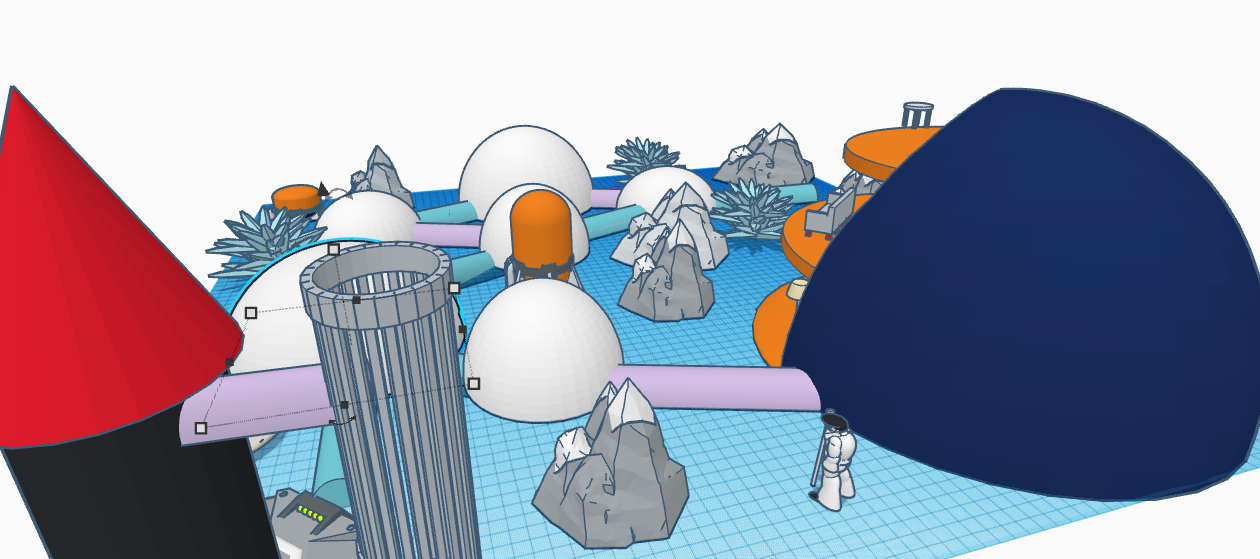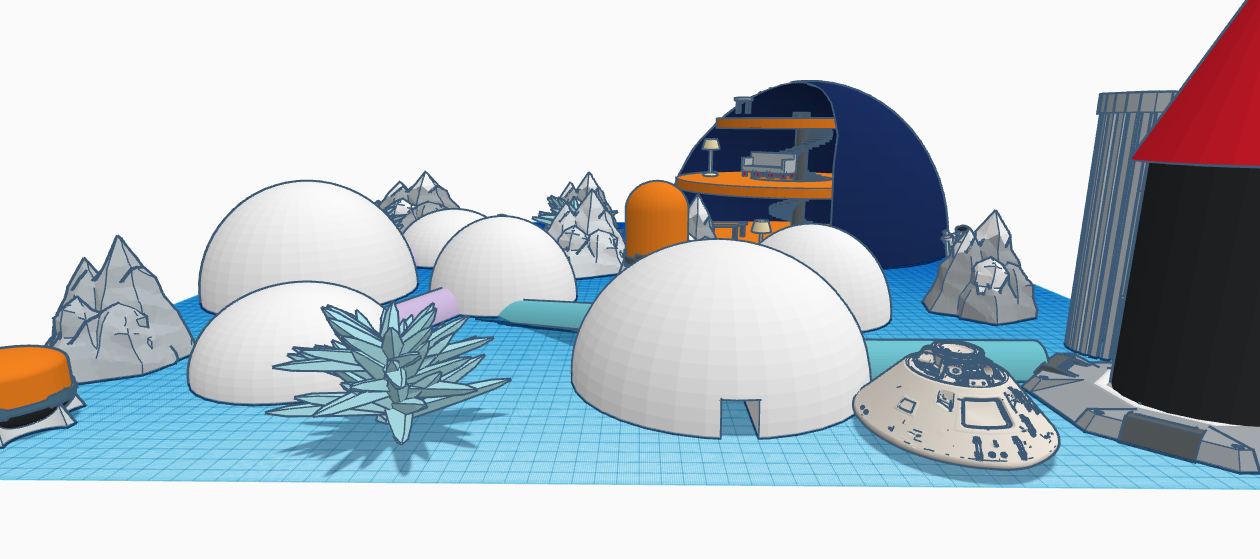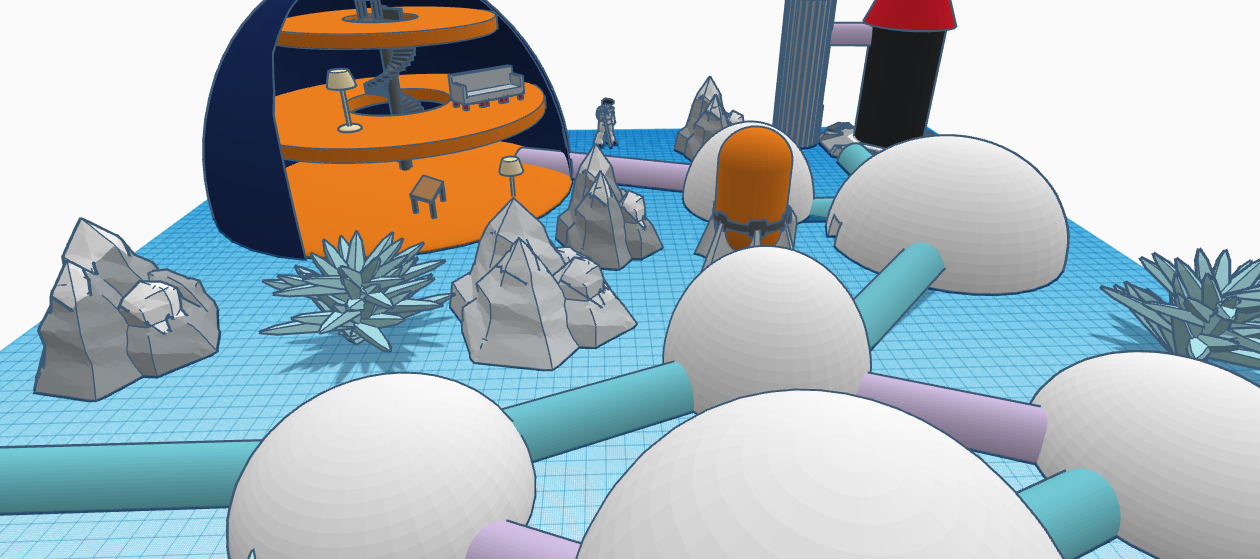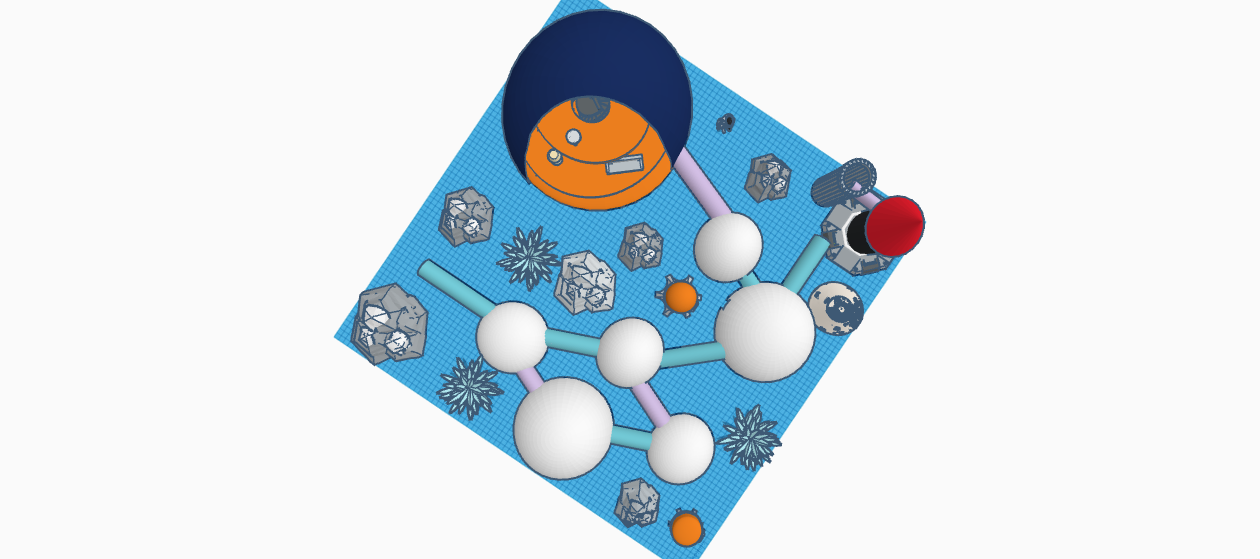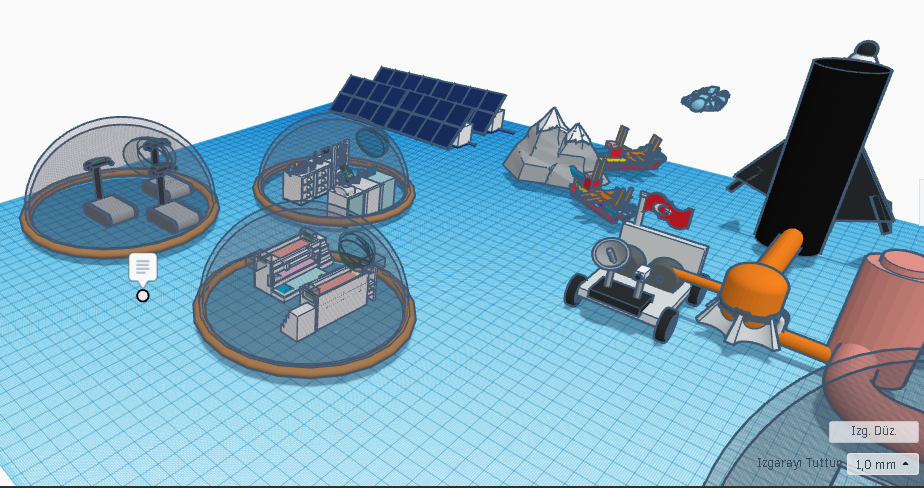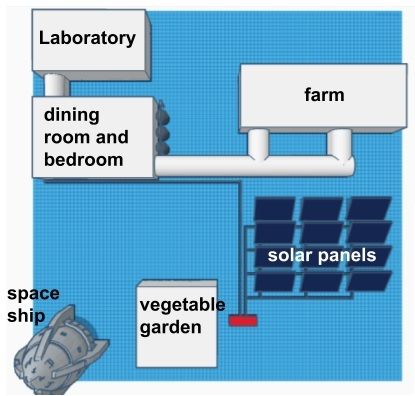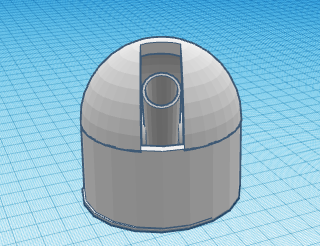Moon Camp Explorers Gallery 2021-2022
In Moon Camp Explorers each team’s mission is to 3D design a complete Moon Camp using Tinkercad. They also have to explain how they will use local resources, protect astronauts from the dangerous of space and describe the living and working facilities.
Team: team C
European School Brussels III Brussels Belgium 13 2 / 2
External link for 3d
|
Project description
We were very interested in this topic, so we chose to do Lunar Lava tubes. Lunar lava tubes are lava tubes on the Moon formed during the eruption of basaltic lava flows. When the surface of a lava flow becomes cold, it hardens, and the lava can make a passage beneath the surface in a tube shape. When the lava stops flowing at the end of an eruption, or if it gets diverted elsewhere, it leaves behind an empty cave, which forms the lunar lava tubes. The tunnel measures about 2 km on the moon. Collapses are rather common, as the roof of lava tubes is rather thin, a result of the way it formed. As a result, most lava tubes do not last more than 10 000 years. |
||||
|
Where do you want to build your Moon Camp?
Lunar lava tubes Why did you choose this location?
We decided to build our Lunar lava tubes on the moon, in space. How do you plan to build your Mooncamp? Which materials will you use?
We wanted to build it on the moon because the moon has soil, and it is a good surface for the Lunar lava tubes. We decided on the moon as the location, because the Lunar lava tubes are most common there and to explore them more and see how they look like. |
||||
|
Water
|
Food
|
Electricity
|
Air
|
Protection
|
|
The north pole of the moon appears to be full of dozens of holes leading to underground lava tubes, according to new research released Jan. 11. If these belowground caves provide lots of amounts of ice which scientists believe is possible so that the astronauts could harvest the ice and use them for future moon missions. |
There have been several hundred holes found on the lunar surface. These lunar holes are thought to be leftover lava tubes. Considering the Moon is not evolution active; these lava tubes could be an excellent shelter. Not only could these lava tubes be a shelter for human habitat, but they could also be an ideal location to shelter seeds, sperms, eggs, and DNA of endangered animal and plant species of Earth. |
Lava tubes on the Moon can protect habits from radiation, meteorites, and extreme temperature changes. |
They take the air through the same type of tube to feed themselves, thanks to this they can take off their helmet and breathe better air. |
The protection provides from cosmic radiation, solar radiation, meteorites, micrometeorites. They are insulated from the extreme temperature variations on the lunar surface and could provide a stable environment for inhabitants. |
|
Describe a day on the Moon for one of your Moon Camp astronauts
Mark is an astronaut who has been working in space for a few days. During these days he had to explore the moon, do his own production for food, look for places to get water out, and make a place for him to breathe. During his exploration he found a lunar lava he put a ship to see what happened in the night |
||||


